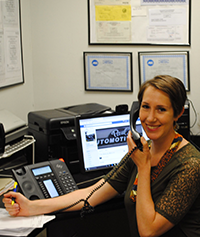
Owning A Car In Midtown Sacramento - What You Need To Know
We love being in Midtown and have been here since the early 1980s. In fact, we feel that Paul’s Automotive is synonymous with Midtown, Sacramento. As a result, many of our customers live and/or work locally and drive very little. In fact, I used to be one of those people (before the babies and the necessity of car seats has required me to drive more). I lived, worked, shopped, went out, did everything within a two-mile radius. I barely drove my car; perhaps to Petco, since biking with a 45lb bag of cat litter was not feasible.
I thought, “I hardly ever drive! I don’t need to get anything done until I reach 5,000-miles for an oil change.” It would take me about three years to drive 5,000 miles! Since I started working with Mike at Paul’s Automotive, I’ve discovered that I was woefully misinformed. For you urban dwellers like me out there, who rarely drive, there are still critical things you need done to ensure your car is safe and will last for years. After all, you barely drive, you don’t want to have to buy a new car!!
There are various things that can happen to your car over time, especially if not driven often:
- Oil and other fluids break down due condensation build up;
- Tires lose air and pressure;
- Tires develop flat spots, separate, and crack;
- Windshield wipers crack;
- Hoses and belts crack; and
- Battery’s charge is affected (especially in winter)
If you’re a Midtowner, we don’t expect to see you in the shop several times a year for mileage services or for big repairs, simply because you are not putting thousands of miles on your car. However, we do hope to see you twice a year: at the beginning of the winter and at the beginning of summer. During these visits, we can make sure your car is ready for the season ahead.
After all, two visits a year to ensure the safety and longevity of your car and prevent even more costly repairs down the road is worth it!
Call us for more information on our new Midtowner Service!